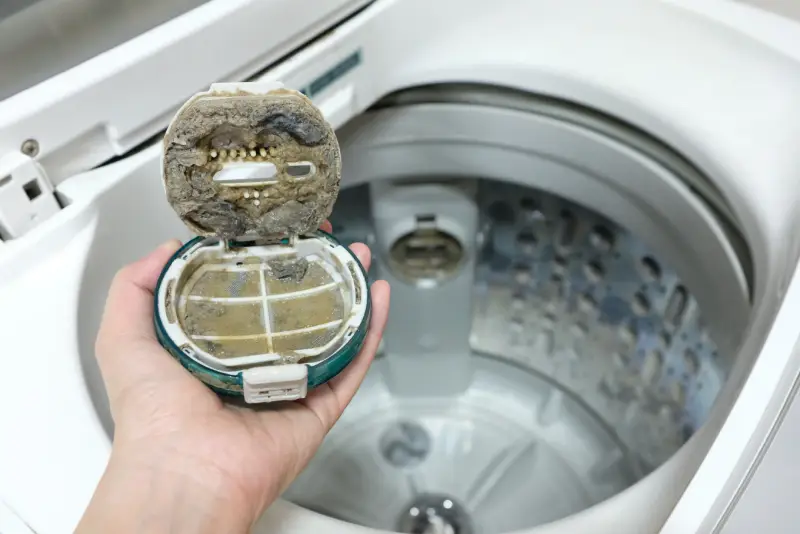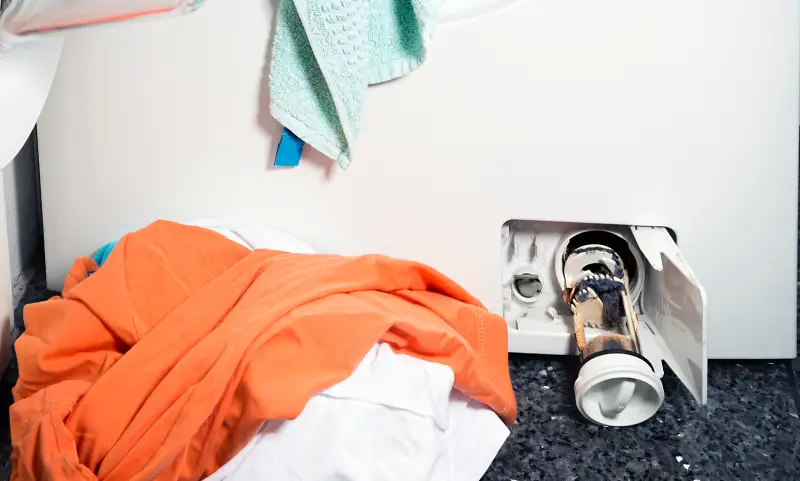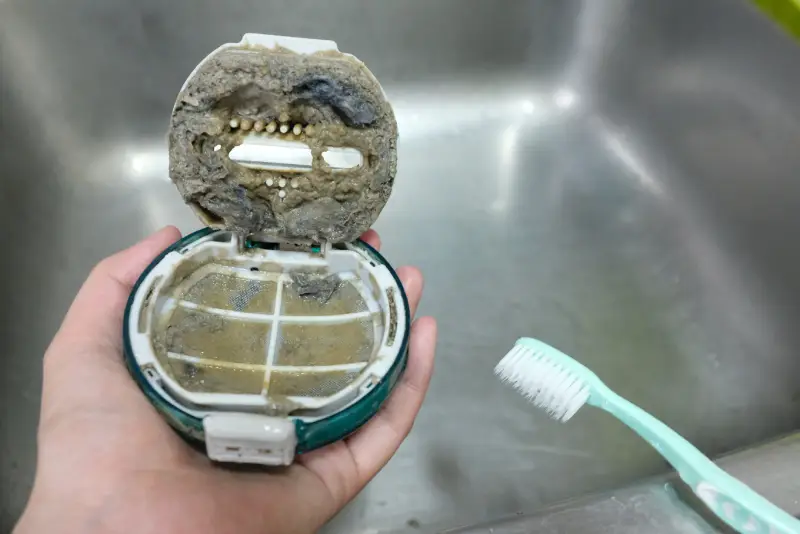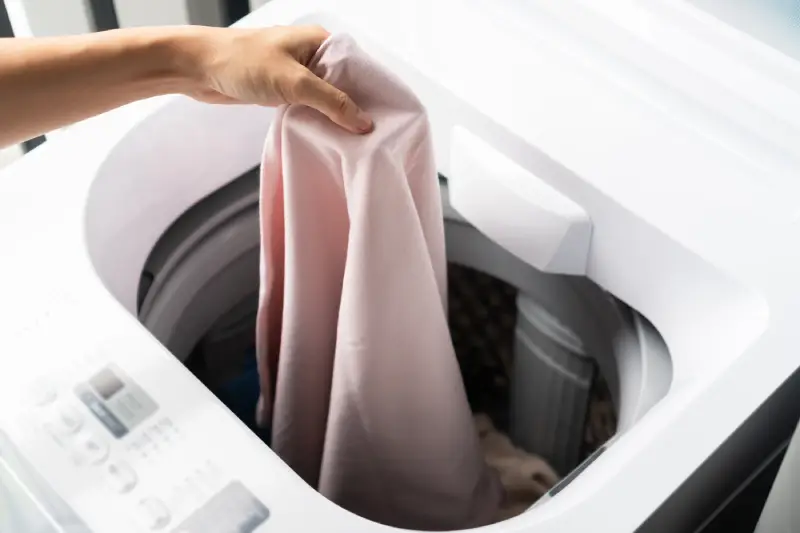The Washer's Lint Trap Needs Cleaning, Too

|
Quick Answer Box: If you’ve been asking yourself, “Why are my clothes coming out of the washer with lint?” The answer lies in how often you clean the lint trap on a washing machine. While many people are familiar with a dryer lint trap, your washer has one too! And it should be cleaned and maintained just as often. |
While you may know that you have to occasionally clean your dryer lint screen, did you know your washing machine has a lint trap, too? If your clothes are coming out of the wash with a furry coat of lint, the lint filter in your washer is probably clogged. You can remedy this problem and eliminate all those white fuzzies from your clothes by learning more about your washing machine lint trap.
What is a Washing Machine Lint Trap?
Some washers have cleanable filters, while others have mesh lint traps. Regardless of the style, the purpose of a washing machine lint trap is the same: keep lint off your clothes. Of course, this is only possible if you keep the filter clean.

How to Find the Laundry Drain Lint Trap
Now that you know your washer has a lint trap, let’s help you find it. The location of your washer’s lint filter depends on the type of machine you have and when it was manufactured. Refer to the owner's manual for help. If you don't have the manual, here are the most likely locations to check for the lint filter:
- Along the top rim of the washer drum: Slide your fingers along the top of the washing basin. There, you may run into a screen, which you can pull out to remove lint. Be careful not to jam your fingers, and be sure to keep a firm grip on the lid so it does not fall on your hand.
- Inside the center agitator: If you have a top-loading washer, inspect the center agitator. The cover may be removable, revealing a lint trap inside.
- At the end of the drainage hose: A small mesh screen may be fitted onto the end of the hose that drains water out of the machine.

How to Clean the Lint Collector for the Washing Machine
Wherever the washer lint trap is located on your machine, you'll probably find it's filled with a sticky layer of lint, detergent, and fabric softener. Follow these simple steps to clean it:
- If the screen is removable, soak it in hot water for 10 minutes to clear away residue.
- If the filter is secured in place, clean the lint from it with a soft brush or paper towel.
- If the trap is disposable, replace it when it becomes clogged.
Clean or replace the washing machine lint filter at least every three months for more efficient operation, better drainage, and reduced lint deposits on clothes. If you’ve taken the steps above and still aren’t seeing great results, contact a local appliance professional to have your washing machine checked to ensure it’s working properly.

High-Efficiency Washers Don't Have a Lint Filter
If you have a newer high-efficiency (HE) washer – whether front- or top-loading – it won’t have a lint trap. Instead, it relies on a self-cleaning pump filter to remove lint from the wash. Still, it's wise to run an empty wash cycle once a month to flush excess lint from the pump filter.
Front-loading high-efficiency washers often have a small door near the bottom of the appliance that you can open to remove buttons, coins, socks, and other objects that could potentially clog the water pump filter. Items that get stuck in this filter can lead to a slower draining cycle. Check the pump regularly for blockages to help your washer function properly. If your clothes aren't coming out of the wash as clean as they should, it's a good indicator that you need to check the filter.
Learn more: The Great Debate: Front-Load vs. Top-Load Washing Machine
Washer Lint Trap Cleaning FAQ
Why are my clothes coming out of the washer with lint?
If you're finding lint on your clothes after they go through the wash, you likely have a full lint trap. You need to find and clean the washing machine filter to eliminate the excess lint.
How often do you clean the lint trap on a washing machine?
The lint trap on a washing machine should be cleaned at least once every three months. Clean it more often if you average two or more loads of laundry a day. If left uncleaned for long enough, it can cause lint to stick to your clothes and lead to less efficient washing cycles.
For Reliable Washing Machine Repairs, Call Mr. Appliance® Today
A dirty lint trap isn't the only thing that can prevent your washing machine from operating at peak efficiency. Clogs, mechanical issues, and other factors can all impact the performance of your washing machine. If you've cleaned your washer's lint trap and still aren't getting the desired results, Mr. Appliance can help with washing machine repair. Contact your local Mr. Appliance today to see how we can help keep all of your major appliances working efficiently.


